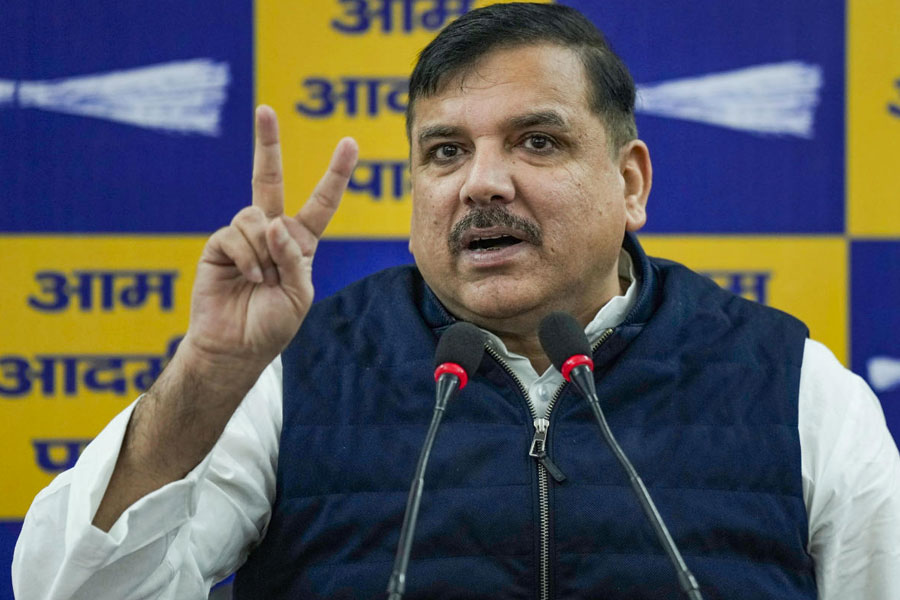 |
The ministry of home affairs has recently redefined the term “salary” for foreign nationals seeking employment visas. As of now, salary will also include taxable perquisites. To be entitled to an employment visa, foreigners must earn at least $25,000 per annum, which works out to Rs 12.5 lakh.
So who’s bugged with all this? Today, it’s the Chinese. Tomorrow it will be everybody.
The biggest source of foreign workers in India is, of course, Bangladesh. But almost all these workers are illegal immigrants and there is no official count. Nepal would be another source; there too it’s the illegal variety.
There have been some other influxes into India in recent times. The top brass at multinational company subsidiaries (who are often of Indian origin) are coming here in larger numbers as India becomes a relevant player on the global stage. They earn big bucks — way above the government floor — and are not affected by the changes. New companies are also coming in with their share of foreign executives.
Companies like Infosys are encouraging foreigners to join. It is recruiting globally; Indians are no longer expected to go to the US and serve as cyber coolies. But Infosys and its ilk are also getting enquiries about jobs in Bangalore. The IT sector has limited opportunity in the crisis-struck West. For some, a lower-paid job in India is better than no job at all. Besides, an India stint will look good on the CV a few years hence. These folks may possibly fall under the government’s employment visa restrictions.
But they are not the target. The focus is really on Chinese companies, particularly in infrastructure-related areas. These companies tend to come with a core group of workers. The Chinese companies argue that these workers know the ropes and are more productive than their Indian counterparts. They won’t go on strike or constantly argue with their managers and mates. For projects with a deadline, they are invaluable. “They constitute only a small part of the total workforce,” says Weimin Yao, vice-president for corporate affairs at Shenzhen-based telecommunications and networking firm Huawei Technologies. “And they are not cheap.”
Indian companies in China also went with a core team of managers and a few workers. But employing local Chinese has always been a priority. The Chinese concentrate on their work; a visitor does not distract them. In India, a visitor would be taken as an excuse for a tea break.
Rangarajan Vellamore, CEO of Infosys China, talks about the endeavour to up the number of Chinese with the company. “Three years ago, it was 15 per cent Indian,” he says. “Now it is 5 per cent Indian.” Infosys has 3,500 people working in five locations in China currently and aims to get to 10,000 over three years.
The number of Chinese workers in India who are under the magnifying glass is also about 10,000, though some estimates put it at 25,000 and others at only 8,000.
The Chinese workers are regarded as a threat only in India. “Skilled Chinese workers are helping India expand its infrastructure at a frenetic pace,” reports the Washington Post. The paper quotes government officials saying: “We just don’t want them to displace Indian workers by doing the jobs that Indians can do.”
If you go deeper into the issue, you will find that the real reason is that Indians are still worried about China’s ambitions. Today, the papers are full of scaremongering — on how China is preparing to invade India. There are vested interests, of course — the army brass who have become arms dealers in Delhi; the weapon manufacturers of the Western countries; the big Indian companies who are being swamped by Chinese imports...
The demographic dividend India is relying upon is dependent on exporting its working-age population to an aging world. How you are treated will depend on how you treat the workers of other countries serving here. Idi Amin is dead and gone, but his soul goes marching on.
THE INDIAN DIASPORA
Workers to the world (Indian population in lakhs)
• Myanmar 29.0
• USA 16.79
• Malaysia 16.65
• Saudi Arabia 15
• UK 12
• South Africa 10
• UAE 9.5
• Canada 8.51
• Mauritius 7.16
• Trinidad & Tobago 5
• Guyana 3.95
• Fiji 3.37
Source: Report of the High Level Committee on Indian Diaspora










